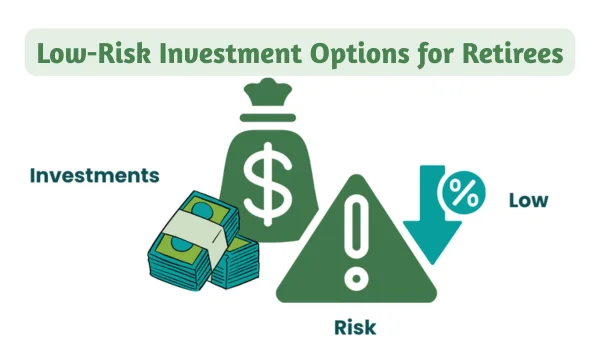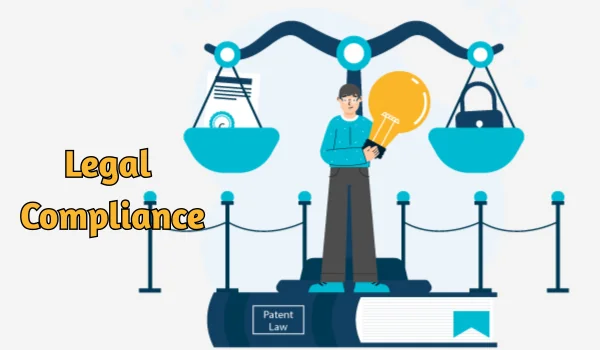Retirement is the phase of life where income generation takes a backseat, and financial security becomes a top priority. After working hard for decades, retirees in India seek investment options that offer safety, regular income, and capital preservation—while keeping risks to a minimum.
In this article, we’ll explore the top low-risk investment options tailored for Indian retirees in 2025, helping you maintain financial independence without worrying about market volatility.
✅ Why Low-Risk Investments Matter in Retirement
During retirement, individuals rely on fixed income from their savings or pension. Therefore, protecting the principal amount becomes more important than chasing high returns.
Key needs for retirees:
- Regular monthly income
- Low or negligible capital risk
- Tax efficiency
- Liquidity when needed
- Protection from inflation (where possible)
📋Best Low-Risk Investment Options for Retirees in India (2025)

| Investment Option | Risk Level | Returns (Approx.) | Lock-in Period | Taxation Type | Ideal For |
|---|---|---|---|---|---|
| Senior Citizens Savings Scheme (SCSS) | Very Low | 8.2% (Q1 FY25) | 5 years | Taxable; 80C benefit available | Monthly income + tax savings |
| Post Office Monthly Income Scheme | Very Low | 7.4% | 5 years | Taxable | Stable monthly income |
| Pradhan Mantri Vaya Vandana Yojana | Very Low | 7.4% (Fixed) | 10 years | Taxable | Pension-like fixed monthly income |
| Fixed Deposits (FDs) for Seniors | Low | 6.5%–7.5% | 1–10 years | Taxable; 80TTB benefit up to ₹50k | Lump sum or recurring deposits |
| Debt Mutual Funds (Short Duration) | Low | 6%–7% | No lock-in | Taxed per slab post-2023 changes | Medium-term, low-risk capital growth |
| RBI Floating Rate Bonds | Low | 8.05% (June 2025) | 7 years | Taxable | Capital protection + interest safety |
| Tax-Free Bonds (Govt-backed) | Very Low | 5.5%–6% (tax-free) | 10–20 years | Tax-free | Long-term, tax-free income |
| Annuities from LIC/Private Insurers | Low | 6%–7% | Lifetime | Taxable | Lifetime monthly/quarterly payout |
🔎 1. Senior Citizens Savings Scheme (SCSS)
SCSS is a government-backed savings instrument exclusively for senior citizens aged 60 and above.
- Interest Rate (Q1 FY 2025): 8.2%
- Interest paid quarterly
- Lock-in: 5 years (extendable by 3 years)
- Max investment: ₹30 lakhs (from April 2023 update)
✅ Benefits:
- Guaranteed returns
- Eligible for ₹1.5 lakh deduction under Section 80C
- Backed by the Government of India
❌ Drawbacks:
- Premature exit penalty
- Fully taxable interest
🔎 2. Post Office Monthly Income Scheme (POMIS)
POMIS offers fixed monthly income to depositors with very low risk.
- Interest Rate: 7.4%
- Monthly interest payout
- Lock-in: 5 years
- Max limit: ₹9 lakh (individual), ₹15 lakh (joint)
✅ Benefits:
- Ideal for retirees wanting monthly cash flow
- Capital safety assured by the Government
❌ Drawbacks:
- No tax benefits
- Fixed rate doesn’t beat inflation in the long term
🔎 3. Pradhan Mantri Vaya Vandana Yojana (PMVVY)
Operated by LIC, PMVVY is a pension scheme for senior citizens.
- Age: 60 years and above
- Interest/Pension Rate: 7.4% (annualized return)
- Lock-in: 10 years
- Maximum investment: ₹15 lakh
✅ Benefits:
- Regular monthly/quarterly/annual pension options
- Safe and government-guaranteed
❌ Drawbacks:
- Long lock-in period
- Taxable income
🔎 4. Fixed Deposits for Senior Citizens
Most Indian banks offer higher FD rates to seniors, typically 0.25–0.50% higher than regular rates.
- Interest Rate: 6.5% to 7.5%
- Tenure: 1 to 10 years
- Tax Deduction under Section 80TTB (up to ₹50,000 interest)
✅ Benefits:
- Safe, flexible, and easily accessible
- Multiple interest payout options: monthly, quarterly, annually
❌ Drawbacks:
- TDS applicable if interest exceeds ₹50,000
- May not beat inflation over long-term
🔎 5. Debt Mutual Funds (Low Duration/Short-Term)
Debt funds invest in government securities, bonds, and corporate papers. After 2023, debt fund taxation changed — they are now taxed as per income slab, irrespective of holding period.
- Expected Returns: 6%–7%
- Highly liquid
- No lock-in
✅ Benefits:
- Better post-tax returns if you fall in a low tax slab
- Good for emergency corpus or short-term income
❌ Drawbacks:
- Slight market-linked risk (NAV fluctuation)
- No 20% LTCG with indexation benefit after 2023
🔎 6. RBI Floating Rate Savings Bonds
Issued by the Reserve Bank of India, these bonds are 100% secure and ideal for those wanting predictable returns with floating interest rates.
- Current Interest Rate: 8.05% (June 2025)
- Revised every 6 months
- Lock-in: 7 years
- Interest paid semi-annually
✅ Benefits:
- Safe alternative to FDs
- Interest rate linked to NSC + 0.35%
❌ Drawbacks:
- No premature withdrawal (except for some senior citizens with conditions)
- Interest is fully taxable
🔎 7. Tax-Free Bonds
Issued by PFC, REC, NHAI, IRFC, and other public sector companies.
- Interest: 5.5%–6% (tax-free)
- Tenure: 10–20 years
- Tradable on stock exchanges
✅ Benefits:
- Tax-free interest income
- Ideal for high-tax bracket retirees
❌ Drawbacks:
- Limited new issues, mostly available in secondary market
- Long maturity periods
🔎 8. Annuity Plans from LIC or Private Insurers
Annuities offer guaranteed income for life, and retirees can choose from various payout options.
- Interest/payout rate: 6%–7%
- Lump sum invested, lifetime monthly/quarterly income
- Available with return of purchase price option
✅ Benefits:
- Lifetime income assurance
- Suitable for those without pension
❌ Drawbacks:
- Not inflation-adjusted
- Irrevocable after purchase
📌 Expert Tips for Retirees
- Diversify: Don’t put all your savings in one instrument. A mix of SCSS, FDs, and RBI bonds can ensure income + liquidity.
- Watch Taxes: High returns can get eaten by taxes. Choose instruments like SCSS (with 80C) or tax-free bonds.
- Avoid Risky Investments: Stay away from equity-heavy funds or ULIPs unless you have surplus funds.
- Set Up Auto Withdrawals: Choose options that pay interest monthly to supplement your pension.
Final Words
Retirement should be stress-free, and a good investment strategy plays a crucial role in achieving that peace of mind. The best low-risk investment options for retirees in India balance safety, income, and liquidity. Depending on your monthly expense, lifestyle, and tax bracket, you can pick a combination of the above instruments.
Always consider consulting a certified financial planner to create a tailored retirement portfolio.
Need help building a retirement portfolio?
Drop your age, retirement savings, and income goals — and I’ll help you create a safe and sustainable plan.





